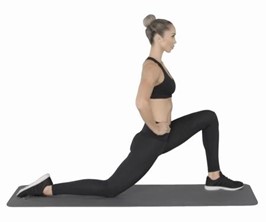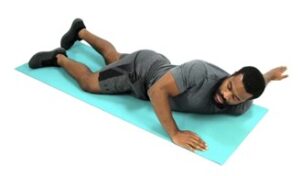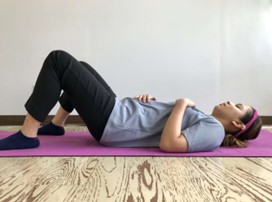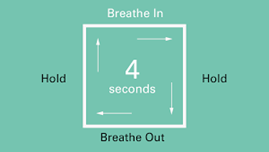 A good night’s sleep is an elusive goal for many people in our world. For some people, a good night of sleep would be as rare as finding a four-leaf clover. There are so many things that disrupt our sleep patterns from stress, to caffeine, pain, and even unhealthy foods. These disrupt our hormonal patterns and make sleeping at night a torturous task instead of a renewal of the mind and body.
A good night’s sleep is an elusive goal for many people in our world. For some people, a good night of sleep would be as rare as finding a four-leaf clover. There are so many things that disrupt our sleep patterns from stress, to caffeine, pain, and even unhealthy foods. These disrupt our hormonal patterns and make sleeping at night a torturous task instead of a renewal of the mind and body.
In our last newsletter “Get Rid of Belly Fat”, we spoke about how important it is to reduce your cortisol levels to improve your health. Being able to sleep well is one key to reducing your cortisol levels. We often advise many things to help a patient improve their quality of sleep including a more whole food diet, intermittent fasting, journaling, a consistent bedtime routine, and relaxation techniques. In this newsletter I want to specifically address the relaxation techniques of exercise and conscious breathing to help improve your sleep.
As we go about our normal day there is often a buildup of tension and stress that unless addressed can increase your cortisol levels and hinder your quality of sleep. Sleep requires a combination of fatigue and low internal noise. Physical and mental fatigue is not hard to come by in our culture. However, the low internal noise can be very difficult to find due to stress and tension. Internal noise is often described as the brain’s frequency of thought and emotional processing. While we sleep, the brain does not go completely quiet but it does dim to a ‘low internal noise.’ Stress and emotional upheaval can prevent us from reaching a state of low internal noise and prevent a night of restful sleep. Have you ever just laid there in bed feeling physically tired but not able to quiet your brain and fall asleep? Like a child on Christmas Eve ‘low internal noise’ can be hard to find even when we want to desperately fall asleep.
There are exercises and breathing techniques that can help improve our ability to process our stress and emotions. Here are a few of our favorites that help:

1. Child’s Pose:
Kneel on the bed or floor, then sit back on your heels and stretch your arms forward, lowering your chest toward the floor. Hold this for 30 seconds. Repeat 3-5 times.
 2. Cat-Cow Stretch:
2. Cat-Cow Stretch:
Get on your hands and knees on the bed, arch your back up like a cat, then lower your back and lift your head like a cow. Perform this movement slowly for 15-30 repetitions.
 3. Legs Up the Wall:
3. Legs Up the Wall:
Lie on your back with your legs extended up against the wall. Keep sliding your buttocks closer to the wall for a gentle hamstring stretch. Hold this position for 90 seconds.
 4. Kneeling Hip Flexor Stretch:
4. Kneeling Hip Flexor Stretch:
Kneel on a mat with both knees, then place one foot forward so that you have a 90-degree angle at the hip and knee. Place your hands on the front knee for support (if needed). This is the start position of the kneeling hip flexor stretch. Keeping the torso upright, slowly lean forward until you feel a comfortable stretch through the groin and top of the thigh (rear leg). Hold for 8-10 seconds, then slide the front foot forward and push into the stretch again. Perform on each side.
 5. Lying Pectoral Stretch:
5. Lying Pectoral Stretch:
Begin by lying face down on the floor. Extend your arms out to the sides in the shape of a ‘T’ with your palms facing down. Next, start rolling onto your right side by pushing yourself with your one hand. Lift and bend your same side leg. Place your foot behind your extended leg for stability. Hold for 30 seconds. Repeat on the other side. To deepen the stretch, lift the opposing arm up towards the ceiling.
Breathing Techniques: Practicing calming breathing techniques before bed can help signal to your body that it’s time to wind down and prepare for sleep. Calm breathing activates the parasympathetic nervous system, often called the ‘rest and digest’ system. This response helps counteract the stress response (sympathetic nervous system activation), promoting relaxation and calmness. Breathing techniques can lower the levels of stress hormones such as cortisol in the body. Lowering these hormones helps calm the mind and prepare the body for sleep.
Controlled breathing encourages muscle relaxation. Tension in muscles, especially in the neck, shoulders, and back, can contribute to sleep difficulties. By relaxing these muscles, calm breathing can promote physical comfort conducive to sleep. Practicing calm breathing requires mindfulness and focus on the present moment. This mental shift away from racing thoughts or worries can help quiet the mind and reduce anxiety, making it easier to fall asleep. Adequate oxygen levels contribute to a calm and comfortable state, supporting better sleep quality.
Overall, calm breathing helps create a physiological and mental environment that is conducive to sleep by reducing stress, promoting relaxation, and enhancing mindfulness. Practicing calming breathing techniques before bed can help signal to your body that it’s time to wind down and prepare for sleep. Here are a few effective breathing techniques you can try:
Lie down comfortably and place one hand on your abdomen and the other on your chest. Inhale deeply through your nose, allowing your abdomen to rise, then exhale slowly through your mouth, feeling your abdomen fall. Repeat this for several minutes.
2. 4-7-8 Breathing:
Inhale quietly through your nose for a count of 4, hold your breath for a count of 7, then exhale slowly through your mouth for a count of 8. Repeat this cycle for several rounds.
3. Alternate Nostril Breathing:
Sit comfortably with your spine straight. Use your right thumb to close your right nostril and inhale slowly through your left nostril. Then, close your left nostril with your right ring finger and exhale through your right nostril. Inhale through the right nostril, close it, and exhale through the left nostril. Repeat this cycle for several rounds.
4. Box Breathing:
Inhale deeply for a count of 4, hold your breath for a count of 4, exhale for a count of 4, and then hold your breath again for a count of 4 before starting the cycle again. Visualize tracing a box with your breath. Try this for several minutes.
There are a lot of different products on the market to help you sleep. Some can be gentle, others can be dangerously strong. Rarely are there products that are both safe and highly effective. That is why I love CBD/CBN gummies. The blend of CBD and CBN cannabinoids offers a relaxing calmness that lowers the internal noise of the brain allowing one to fall asleep quickly and stay asleep for several hours.
We hope these stretches and breathing techniques are helpful to improve your sleep health. At [Core], we are dedicated to seeing every aspect of your health improve. We look forward to seeing you become healthier than you have ever been.










